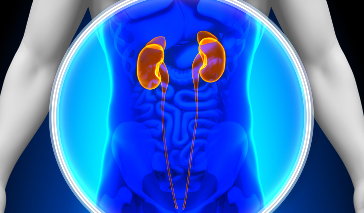The urinary system's primary function is to remove waste products from the blood and remove them from the body in the form of urine. Also known as the urinary tract or excretory system, the typical urinary system includes two kidneys, two ureters, the bladder, and the urethra.
Urine is made in the kidneys in three stages: filtration, reabsorption and secretion. The other parts of the urinary system are responsible for moving the urine out of the body, although in men the urethra (a tube allowing urine to flow from the bladder and out of the genitals) is also involved in ejaculation.
Roles of the Urinary System
In addition to its main function—making and getting rid of urine—the urinary system has other important roles in the body:
- Keeping the blood volume and pressure within normal range
- Controlling blood levels of minerals such as potassium, sodium, chloride, and calcium
- Helping the body stay internally regulated and in balance (a process known as homeostasis)
Composition of Urine
Urine is fluid waste, with color ranging from pale yellow to amber (the darker it is, the more concentrated). It's made up of 95 percent water, with the other 5 percent consisting of:
- Urea: a waste product made when cells break down proteins
- Creatinine: a waste product resulting from the contraction of muscles
- Uric acid: a waste product from the breakdown of nucleic acids (compounds found in molecules like DNA)
- Mineral salts and ions: potassium, sodium, chloride, calcium and others
- Drug byproducts: waste products made when medications are broken down in the body
Anatomy of the Kidney
The two kidneys are each about the size of an adult's fist, and located on either side of the spine near the lower back. Each kidney has an indentation where the following attach:
- Renal artery: carries blood to the kidney
- Renal vein: carries blood away from the kidney
- Ureter: carries urine away from the kidney and to the urinary bladder
The kidney has three layers:
- Outer, light-colored layer (renal cortex)
- >Middle, reddish-brown layer (renal medulla)
- Center layer (renal pelvis), where urine collects before leaving the kidney
Urine is made in microscopic structures in the kidney called nephrons. These extend from the outer to middle layers and have two parts:
- A network of small blood vessels (renal corpuscle)
- A long U-shaped tube (renal tubule) that passes through the renal pyramids in the middle part of the kidney
The renal tubules from different nephrons join together and eventually empty into the renal pelvis in the middle part of the kidney. From here, urine enters the ureters.
Urine Formation
Urine formation occurs in three stages: filtration, reabsorption, and secretion.
Filtration occurs in the renal corpuscles, the small blood vessels in the nephrons. Blood entering the kidney is filtered to form renal filtrate, a combination of blood and waste. From here, most of the fluid and other materials (water, glucose, proteins, vitamins, etc.) will be reabsorbed—a process that happens in the renal tubules, which are the long, thin tubes that pass between the outer and inner layer of the kidneys. But the kidneys also actively secrete certain waste products into the renal filtrate, including ammonia, creatinine, and drug byproducts.
Urine Elimination
Urine collects in the center part of the kidney (the renal pelvis), then the kidney expels the urine through its ureter, the long tube that runs to the bladder. The ureters are lined with smooth muscle that helps propel the urine to the bladder, although gravity does much of the work.
The bladder collects and temporarily stores urine. As it fills up, its wall stretches and when it has amassed around 7 ounces of urine, special receptors in the bladder wall send a signal to the spine. The spine sends another signal back to the bladder, causing the ring of muscle between the bladder and the urethra to relax, allowing urine to leave the bladder and enter the urethra. This causes the urge to urinate.
A ring of muscles at the end of the urethra, the external sphincter, can be controlled consciously. Urination happens only when these muscles are relaxed and the urethra is forced open.
Common Urinary Tract Conditions
One of the most common problems people experience with their urinary tracts is urinary tract infection. Symptoms of UTI include:
- A constant urge to urinate
- A burning sensation while urinating
- Blood in urine
- Cloudy urine
- Unusually strong-smelling urine
- Pelvic pain or rectal pain
Those suspecting they may have a urinary tract infection should consult a physician, as these symptoms can also be indicative of other, more serious urinary tract conditions.
Another common urinary system abnormality is kidney stones. Kidney stones are small mineral deposits that form inside the kidneys. They can be very painful to pass, but typically don't cause any long-term complications.
- Severe pain under the ribs, near the side and back
- Pain while urinating
- Discolored urine
- Cloudy urine
- Nausea
- Persistent, frequent urge to urinate
Kidney stones may be passed simply with the assistance of pain medication and drinking lots of fluids, but in some cases surgery may be required.
References
UXL Complete Health Resource. The Urinary System. Levchuck CM, McNeil A, Nagel R, et al., eds. 2001.


